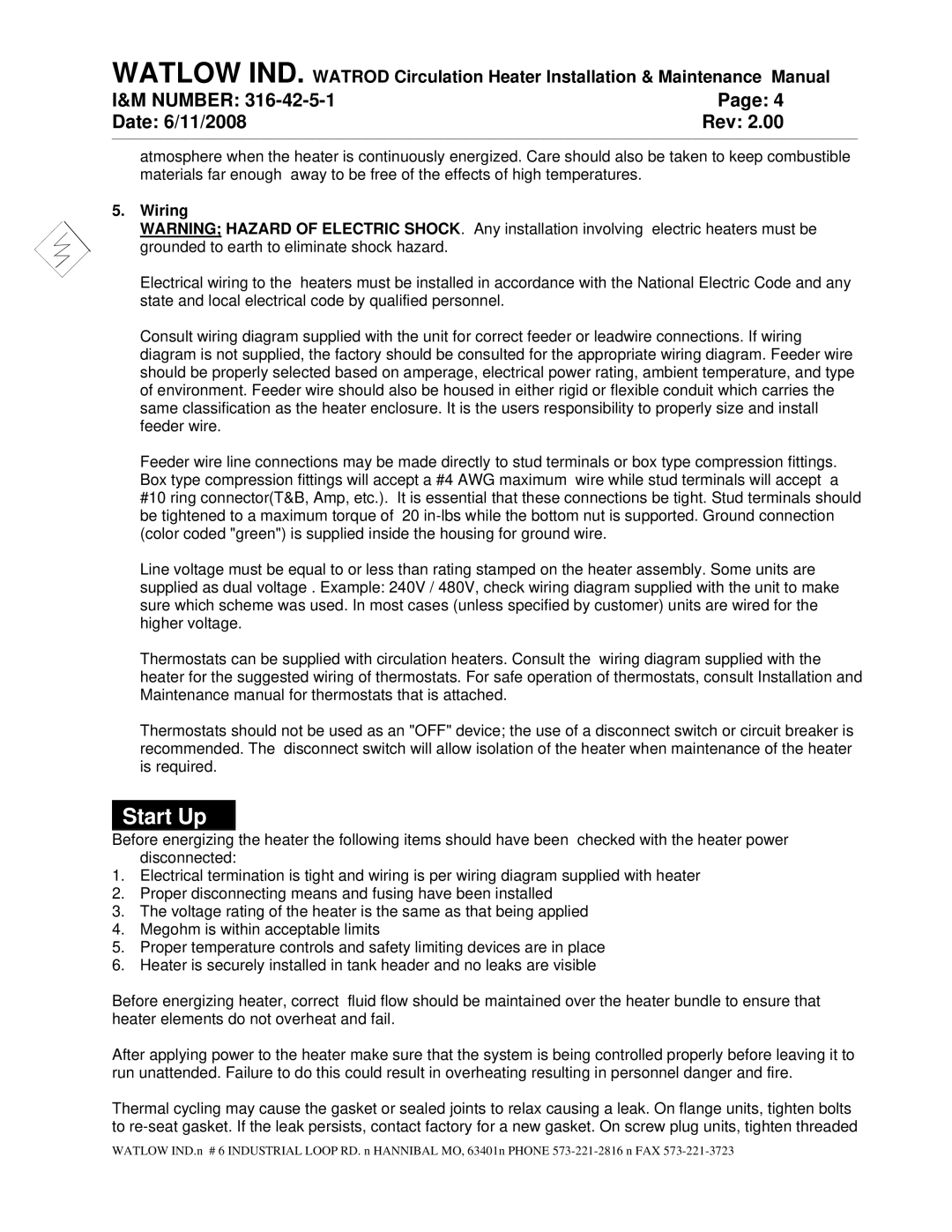316-42-5-1 specifications
The Watlow Electric 316-42-5-1 is an advanced temperature control device designed for precision in industrial applications. It showcases the quality and innovation synonymous with Watlow Electric, a leader in thermal solutions. The device serves as a testament to the company's dedication to enhancing performance through reliable temperature control.One of the main features of the Watlow Electric 316-42-5-1 is its durable construction, utilizing high-quality materials that make it suitable for a wide range of environments. With a robust design, this temperature control device can withstand extreme temperatures and varying levels of moisture, making it an ideal choice for industries such as food processing, pharmaceuticals, and semiconductor manufacturing.
The 316-42-5-1 incorporates advanced controlling technologies that enable precise temperature regulation. Its microprocessor-based control system allows for accurate temperature readings and adjustments, providing users with confidence in their thermal management processes. The device also supports various control strategies, including ON/OFF, PID control, and feedforward control, offering flexibility to meet diverse operational needs.
In addition to its control features, the Watlow Electric 316-42-5-1 is equipped with user-friendly interfaces, including digital displays and intuitive programming options. This design ensures ease of use for operators, enabling quick setup and adjustments without the need for extensive technical knowledge. The device's ability to store multiple setpoints is beneficial for operations requiring different temperature settings throughout the process cycle.
Another significant characteristic is its communication capabilities. The Watlow Electric 316-42-5-1 supports multiple communication protocols, which facilitates integration into larger automated systems. This capability allows for better monitoring and management of temperature control across numerous devices within a manufacturing environment.
Energy efficiency is also a noteworthy aspect of the 316-42-5-1. By utilizing innovative technologies for energy management, it minimizes energy consumption while maintaining optimal performance. This feature contributes to lower operational costs and a reduced environmental impact.
In conclusion, the Watlow Electric 316-42-5-1 stands out with its combination of durability, advanced control technology, user-friendly interfaces, and energy efficiency. These features make it a reliable choice for professionals seeking precision in temperature management across a variety of industrial applications. Watlow Electric continues to lead the way in thermal solutions, and the 316-42-5-1 is a prime example of the company’s commitment to innovation and quality.

